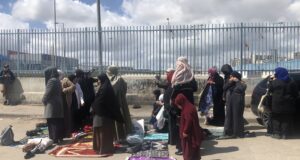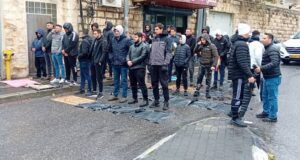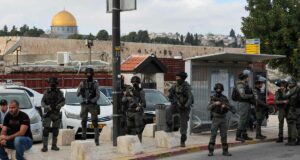Amos Harel | Ha’aretz
14 May 2009
Palestinian interest in the intentions of the new Israeli government tends to focus on one small area in the West Bank, Ma’aleh Adumim and its environs, particularly the area known as E1 linking the settlement to East Jerusalem.
Earlier this month Palestinian Prime Minister Salam Fayad participated in mass Friday prayers against land expropriation in the area, and the Palestinian media was full of reports of Israeli settlement plans in Ma’aleh Adumim and E1.
The concerns are not baseless. E1 is the only area that Benjamin Netanyahu explicitly committed to developing, on the eve of February’s elections. His political rival, Labor Party chairman Ehud Barak, also publicly expressed support for building there.
Plans for expanding the Israeli presence around Ma’aleh Adumim continued apace under the Ariel Sharon and Ehud Olmert governments, in the interest of creating contiguous Jewish settlement from East Jerusalem to Mitzpeh Yeriho, on the outskirts of Jericho. Visitors to the area in recent weeks can see that the gradual annexation is continuing, even if its goal is far from being reached.
Still, a significant hurdle lies around the corner: the firm, declared opposition of the United States government, opposition that is likely to be expressed during Netanyahu’s meeting with President Barack Obama in Washington next week.
One of the main developments in the area is at Kedar, a small settlement of 80 families, south of Ma’aleh Adumim, that is at the center of a prolonged legal battle. The security establishment, under Sharon’s inspiration, designed the route of the separation fence so that 8,000 dunams (2,000 acres), including Kedar, would be on the Israeli side of the barrier. The route would have expropriated lands from the Palestinian village of Sawahra and forced the evacuation of hundreds of Bedouin living between Kedar and Ma’aleh Adumim.
After residents of Sawahra petitioned the High Court of Justice on the matter, The Council for Peace and Security drafted a new plan that placed Kedar on the Palestinian side of the fence. After a two-year delay, the defense establishment presented yet a third plan, this one expropriating 4,000 dunams but including Kedar on the Israeli side of the barrier.
In early June the High Court held a hearing on the petition against the new plan. Meanwhile, an Interior Ministry-appointed committee recommended uniting Kedar and Ma’aleh Adumim into a single community, a step that would facilitate authorization of the new route.
GOC Southern Command Gadi Shamni has issued orders to pave an additional road passing south of the fence’s route in Kedar, linking the Bethlehem area with Mitzpeh Yeriho. The cost of the project is estimated at hundreds of millions of shekels.
In E1, as Haaretz reported in February, infrastructure plans were completed last year for the construction of a new neighborhood, to be called Mevasseret Adumim. Construction of settlements and outposts has also continued, particularly in the northeastern part of the Ma’aleh Adumim bloc, in the settlement of Kfar Adumim and the satellites that have sprung up around it.
All of these developments share a single common denominator – by taking “a dunam here and a dunam there,” they are tightening Israel’s grip on the land. The new roads and junctions were designed to allow a separation between Israelis and Palestinians. In tandem to roads built for Israeli use, Palestinians coming from Ramallah will travel via Hizmeh and the al-Zaim Junction south toward Bethlehem, or east toward Jericho via a bypass road near Kedar.
These steps seriously diminish the already narrow possibility of reaching a final-status agreement with the Palestinians. Over the past decade Palestinian officials have hinted that they could come to terms with Ma’aleh Adumim, but that willingness is unlikely to extend to the giant “bubble” developing around the settlement.
Colonel (Res.) Shaul Arieli of the Council for Peace and Security, one of the framers of the Geneva Initiative, says that Israel’s actions can be explained in one of two ways – as the deliberate sabotage of a future final-status agreement, or as the wanton waste of taxpayer money.
 International Solidarity Movement Nonviolence. Justice. Freedom.
International Solidarity Movement Nonviolence. Justice. Freedom.


